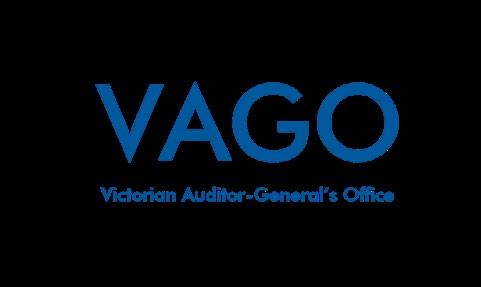
9 minute read
Climate adaptation
FINANCIAL REPORT
Auditor-General’s Audit Report
Independent Auditor’s Report
Opinion I have audited the financial report of the Yarra Valley Water Corporation (the corporation) which comprises the: • balance sheet as at 30 June 2022 • statement of comprehensive income for the year then ended • statement of changes in equity for the year then ended • cash flow statement for the year then ended • notes to the financial statements, including significant accounting policies • statutory certification. In my opinion, the financial report presents fairly, in all material respects, the financial position of the corporation as at 30 June 2022 and its financial performance and cash flows for the year then ended in accordance with the financial reporting requirements of Part 7 of the Financial Management Act 1994 and applicable Australian Accounting Standards.
Basis for Opinion
Other Information
Key audit matters
I have conducted my audit in accordance with the Audit Act 1994 which incorporates the Australian Auditing Standards. I further describe my responsibilities under that Act and those standards in the Auditor’s Responsibilities for the Audit of the Financial Report section of my report. My independence is established by the Constitution Act 1975. My staff and I are independent of the corporation in accordance with the ethical requirements of the Accounting Professional and Ethical Standards Board’s APES 110 Code of Ethics for Professional Accountants (the Code) that are relevant to my audit of the financial report in Victoria. My staff and I have also fulfilled our other ethical responsibilities in accordance with the Code. I believe that the audit evidence I have obtained is sufficient and appropriate to provide a basis for my opinion.
The Board is responsible for the "other information" included in the corporation’s Annual Report for the year ended 30 June 2022. The other information in the Annual Report does not include the financial report, the performance report and my auditor’s reports thereon. My opinion on the financial report does not cover the other information included in the Annual Report. Accordingly, I do not express any form of assurance conclusion thereon. In connection with my audit of the financial report, my responsibility is to read the other information when it becomes available and, in doing so, consider whether the other information is materially inconsistent with the financial report, or our knowledge obtained in the audit or otherwise appears to be materially misstated. If, based on the work I have performed, I conclude that there is a materially misstatement of this other information, I am required to report that fact. I have nothing to report in this regard.
Key audit matters are those matters that, in my professional judgement, were of most significance in my audit of the financial report of the current period. These matters were addressed in the context of my audit of the financial report as a whole, and in forming my opinion thereon, and I do not provide a separate opinion on these matters.

YARRA VALLEY WATER
ANNUAL REPORT 2021-22
155
Key audit matter
Revenues from service and usage charges
Note 2.1 – Revenue from contracts with customers
Revenue from service and usage charges: $954 million
I considered this to be a key audit matter because: • revenue is financially significant • the corporation’s IT billing system and business rules are complex, and inputs to the system are derived from multiple sources • external service providers conduct meter readings of customer water consumption data • there is a high degree of estimation uncertainty in the revenue accrual for unbilled water and sewerage services at year end • the applicable accounting standard AASB 15
Revenue from Contracts with Customers requires detailed and complex financial report disclosures.
How I addressed the matter
My key procedures included: • testing the operating effectiveness of key controls in the billing system and billing process • assessing management's model, key assumptions, and inputs for estimating the accrued revenue • performing substantive analytical procedures by developing an expectation of usage and service charges revenue for the period based on water volumes, number of serviced properties and approved prices, compared against the revenue recorded by the corporation • assessing the adequacy of revenue recognition and measurement policies • assessing the adequacy of financial statement disclosures against AASB 15 Revenue from Contracts with Customers.
Fair value of Infrastructure Assets
Note 4.1 – Total Infrastructure, property, plant and equipment
Fair value of infrastructure assets: $4.536 billion
I considered this to be a key audit matter because: • infrastructure assets are financially significant • the fair value estimate is derived from an incomebased valuation approach that uses a discounted cashflow (DCF) model • management engage an external valuation expert to prepare the fair value estimate • the DCF model is highly complex and involves significant judgements and assumptions • small changes in key assumptions used in the DCF model can materially affect the fair value • the DCF model's forecast period is long, and includes a terminal value, which increases the difficulty in accurately estimating the fair value • the method for calculating the terminal value changed in the current year • accounting standard AASB 13 Fair Value
Measurement (AASB 13) requires extensive financial report disclosures. My key procedures included: • obtaining an understanding of the approach to estimating the fair value of infrastructure • assessing the competence, objectivity and capability of management's expert engaged to assist with the valuation process • engaging a subject matter expert to assist us in obtaining sufficient appropriate audit evidence, including: • the appropriateness of using an income-based valuation approach • identification and assessment of the reasonableness of any changes to the DCF model and/or assumptions, including the new method of calculating the terminal value • the reasonableness and consistency of all the assumptions used in the DCF model • the reasonableness of all inputs used in the DCF model, with specific reference to underlying data and supporting documentation • the DCF model’s computational accuracy • evaluating our subject matter expert's work and concluding the work was adequate for the purposes of our audit • assessing the completeness and adequacy of the financial report disclosures against the requirements of AASB 13, including the significant observable and unobservable inputs utilised in the model and the sensitivity analysis.
2
FINANCIAL REPORT
Auditor-General’s Audit Report continued...
Board’s responsibilities for the financial report
Auditor’s responsibilities for the audit of the financial report
The Board of the corporation is responsible for the preparation and fair presentation of the financial report in accordance with Australian Accounting Standards and the Financial Management Act 1994, and for such internal control as the Board determines is necessary to enable the preparation and fair presentation of a financial report that is free from material misstatement, whether due to fraud or error. In preparing the financial report, the Board is responsible for assessing the corporation’s ability to continue as a going concern, disclosing, as applicable, matters related to going concern and using the going concern basis of accounting unless it is inappropriate to do so.
As required by the Audit Act 1994, my responsibility is to express an opinion on the financial report based on the audit. My objectives for the audit are to obtain reasonable assurance about whether the financial report as a whole is free from material misstatement, whether due to fraud or error, and to issue an auditor’s report that includes my opinion. Reasonable assurance is a high level of assurance but is not a guarantee that an audit conducted in accordance with the Australian Auditing Standards will always detect a material misstatement when it exists. Misstatements can arise from fraud or error and are considered material if, individually or in the aggregate, they could reasonably be expected to influence the economic decisions of users taken on the basis of this financial report. As part of an audit in accordance with the Australian Auditing Standards, I exercise professional judgement and maintain professional scepticism throughout the audit. I also: • identify and assess the risks of material misstatement of the financial report, whether due to fraud or error, design and perform audit procedures responsive to those risks, and obtain audit evidence that is sufficient and appropriate to provide a basis for our opinion. The risk of not detecting a material misstatement resulting from fraud is higher than for one resulting from error, as fraud may involve collusion, forgery, intentional omissions, misrepresentations, or the override of internal control. • obtain an understanding of internal control relevant to the audit in order to design audit procedures that are appropriate in the circumstances, but not for the purpose of expressing an opinion on the effectiveness of the corporation’s internal control • evaluate the appropriateness of accounting policies used and the reasonableness of accounting estimates and related disclosures made by the Board • conclude on the appropriateness of the Board’s use of the going concern basis of accounting and, based on the audit evidence obtained, whether a material uncertainty exists related to events or conditions that may cast significant doubt on the corporation’s ability to continue as a going concern. If I conclude that a material uncertainty exists, I am required to draw attention in my auditor’s report to the related disclosures in the financial report or, if such disclosures are inadequate, to modify my opinion. My conclusions are based on the audit evidence obtained up to the date of my auditor’s report. However, future events or conditions may cause the corporation to cease to continue as a going concern. • evaluate the overall presentation, structure and content of the financial report, including the disclosures, and whether the financial report represents the underlying transactions and events in a manner that achieves fair presentation.
3
YARRA VALLEY WATER
ANNUAL REPORT 2021-22
157
Auditor’s responsibilities for the audit of the financial report (continued)
I communicate with the Board regarding, among other matters, the planned scope and timing of the audit and significant audit findings, including any significant deficiencies in internal control that I identify during my audit. From the matters communicated with the Board, I determine those matters that were of most significance in the audit of the financial report of the current period and are therefore key audit matters. I describe these matters in the auditor’s report unless law or regulation precludes public disclosure about the matter or when, in extremely rare circumstances, I determine that a matter should not be communicated in the auditor’s report because the adverse consequences of doing so would reasonably be expected to outweigh the public interest benefits of such communication.
MELBOURNE 2 September 2022 Paul Martin as delegate for the Auditor-General of Victoria
4
158 DISCLOSURE INDEX
Disclosure Index

YARRA VALLEY WATER
ANNUAL REPORT 2021-22
159


